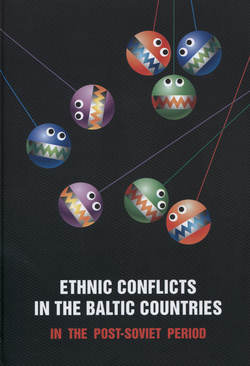Читать книгу Ethnic Conflicts in the Baltic States in Post-soviet Period - Сборник статей - Страница 15
На сайте Литреса книга снята с продажи.
Baltic national minorities as victims of selective weapons of mass destruction
Vladimir Viktorovich Buzaev, Ph.D. in Geology and Mineralogy
Co-chairman of the Latvian Human Rights Committee
Mass non-citizenship
ОглавлениеThe situation with the mass non-citizenship in Latvia and Estonia is given in Table 4.
Non-citizens of Latvia and Estonia constitute 70 % and 22 % correspondingly of all persons without nationality living in the 500-million EU. The fact that those who reached the age of majority by 1991, before that had all political rights in their current states of residence distinguish them from the remaining 8 % of non-citizens in the EU.[5]
In 2012, 1156 people naturalized in Estonia and 2213 in Latvia, which means that it would require 80 and 133 years correspondingly to naturalise the remaining non-citizens. According to the Eurostat data for 2010, Latvia is in 13th and Estonia is in the 20th place in terms of the rate of conferment of nationality. Lithuania is in penultimate place among 33 countries of the EU, EFTA and candidate countries.[6]
Table 4
Comparative data on status of population groups in Estonia and Latvia (2011–2012)[7]
Of 80 differences in the right of citizens and non-citizens of Latvia, on 16 occasions the rights, which cannot be exercised by non-citizens (41 % born locally, for the rest average residence period in Latvia exceeds 45 years), can be exercised by the foreigners who are the EU citizens. For example, they can stand for local elections in Latvia and Estonia whole non-citizens of Latvia, unlike their Estonian fellows, cannot even vote in local elections. The author believes that the continued existence of the mass non-citizenship in the Baltic States is a test of devotion to the ideals of democracy declared in the EU. The test, which this structure has failed ingloriously.
Nonetheless, the share of non-citizens of Estonia in 1992 was 32 % of the population and 83 % of ethnic minorities, and the share of non-citizens of Latvia in 1993 was 29 % and 60 % correspondingly. And while in the last decade of the 20th century the mass non-citizenship significantly influenced the election results, employment of ethnic minorities and their involvement in business, now the role of this adverse factor has substantially weakened compared with the language restrictions. For example, in 2013 in Latvia for the first time the municipal election took place in the circumstances where the elected candidates faced the requirement to have the confirmed knowledge of Latvian to C1 category (5th out of 6 difficulty categories), and a mandate withdrawal procedure was put in place. 79 % of citizens, which is about 300 thousand people, who are non-ethnic Latvians do not satisfy this requirement. At the same time, “only” 260 thousand non-citizens are completely deprived of their right to vote.[8]
5
Ibid., page 123.
6
Ibid., page 130.
7
Ibid., page 127. Naturalisation data as on 01/01/2013
8
In both groups, underage persons (about 13 %) were excluded.
